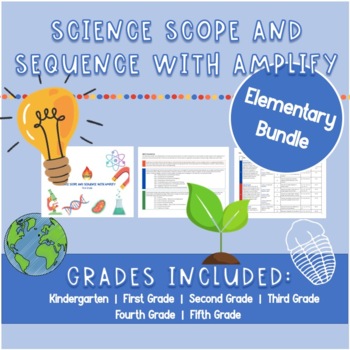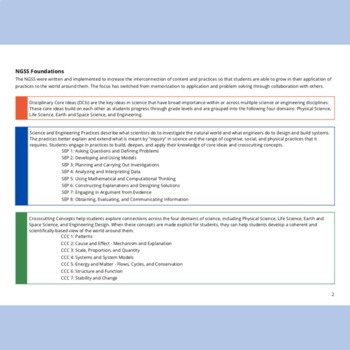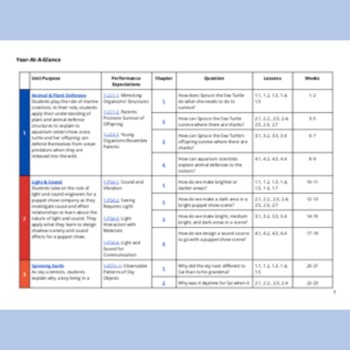Science Scope and Sequence for Amplify Science | Elementary Bundle
- Zip
Products in this Bundle (6)
showing 1-5 of 6 products
Description
Outlining and planning a science scope and sequence can pose its challenges even with curriculum. These science scope and sequences have been prioritized to help you maximize your planning time and instructional time in class. These science scope and sequence are to be used with the Amplify Science curriculum.
These scope and sequences provide you with a year at a glance with a recommended sequence for teaching the science units and chapters. Next, they provide you an outline of the lessons for each chapter, including the Next Generation Science Standards (which are linked in the resource), the anchoring phenomenon, and the role the students play throughout the unit.
We have sifted through each lesson and identified the highest leverage activities, along with suggestions on what to cut out of instruction while still maintaining a cohesive story and unit. We’ve also added a heads up prep box for some units, that gives you heads up when you have to prepare something for the upcoming lessons, giving you time to get ahead and not realize the day of the lesson you were supposed to plant seeds for the students to observe.
Save time and plan ahead with our prioritized units in science using Amplify!
We recommend pairing this resource with our unit assessments.
- Coming Soon: Kindergarten (Unit 1 currently available in our store)
- Coming Soon: 1st Grade
- Coming Soon: 2nd Grade
- 3rd Grade Science Unit Assessments for Amplify Science Bundle
- 4th Grade Science Unit Assessments for Amplify Science Bundle
- 5th Grade Science Unit Assessments for Amplify Science Bundle
Note: Prioritization for elementary is based on students receiving science instruction 2 times a week for 45 minutes





